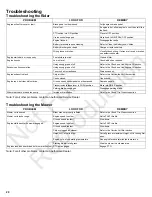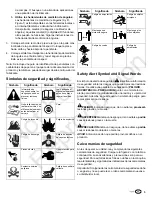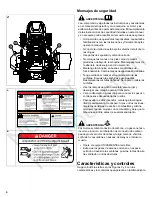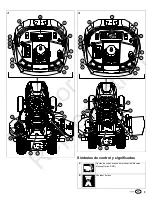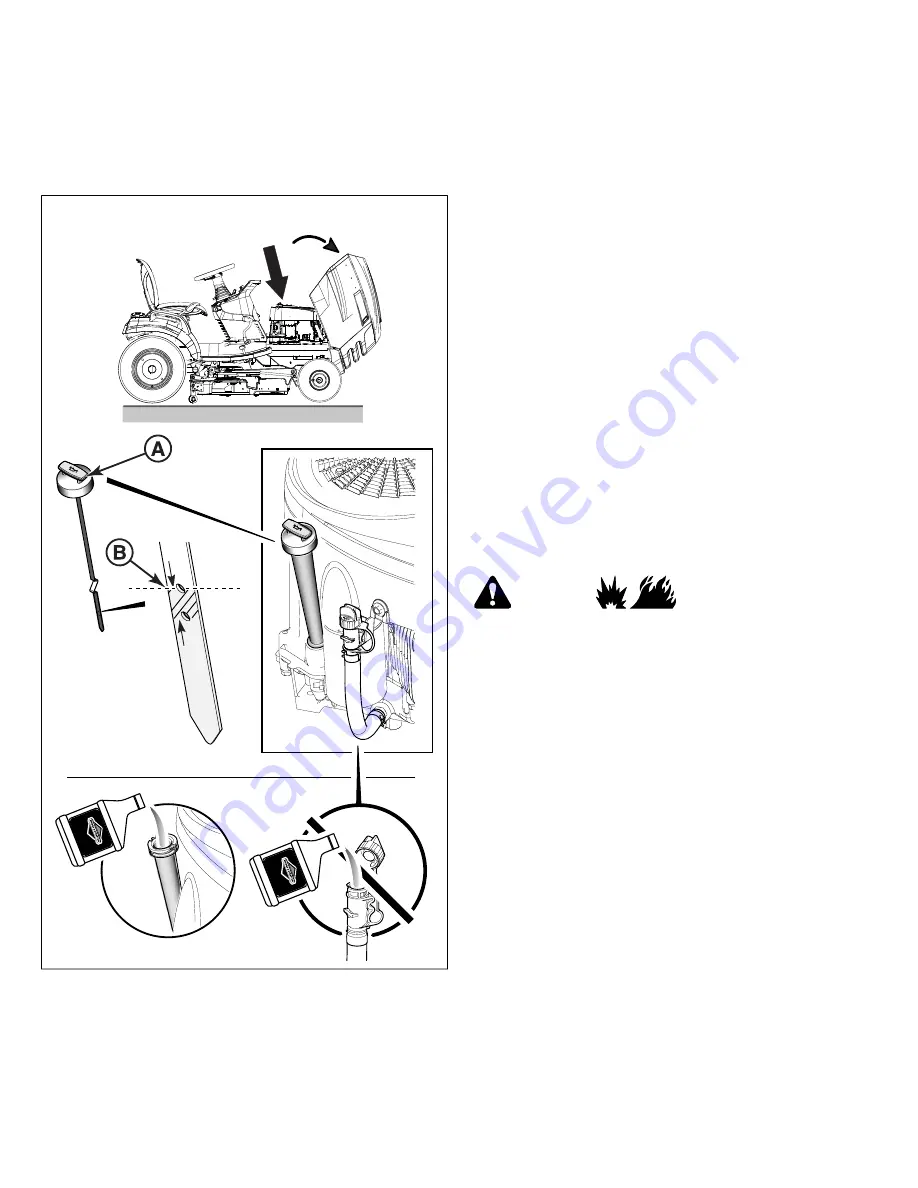
6.
Remove the dipstick and check the oil level. It should be
at the FULL mark (B, Figure 7) on the dipstick.
7.
FULL, insert the dipstick and tighten securely.
8.
If LOW, add oil slowly into the engine oil fill tube (refer to
the
Specifications section). Do not overfill. After adding oil,
wait one minute, then check the oil level.
7
Add Fuel
Fuel must meet these requirements:
• Clean, fresh, unleaded gasoline.
• A minimum of 87 octane / 87 AKI (91 RON). For high
altitude use, see below.
• Gasoline with up to 10% ethanol (gasohol) is acceptable.
NOTICE Do not use unapproved gasolines, such as E15
and E85. Do not mix oil in gasoline or modify the engine to
run on alternate fuels. Use of unapproved fuels will cause
damage to engine components, which will not be covered
under warranty.
To protect the fuel system from gum formation, mix a fuel
stabilizer into the fuel. See Storage. All fuel is not the same. If
starting or performance problems occur, change fuel providers
or change brands. This engine is certified to operate on gasoline.
The emissions control system for this engine is EM (Engine
Modifications).
High Altitude Requirements:
• At altitudes over 5,000 feet (1524 meters), a minimum 85
octane / 85 AKI (89 RON) gasoline is acceptable.
• For carbureted engines, high altitude adjustment is required
to remain emissions compliant. Operation without this
adjustment will cause decreased performance, increased
fuel consumption, and increased emissions. Contact a
Briggs & Stratton Authorized Service Dealer for high
altitude adjustment information.
• Operation of the engine at altitudes below 2,500 feet (762
meters) with the high altitude adjustment is not
recommended.
• For Electronic Fuel Injection (EFI) engines, no high altitude
adjustment is necessary.
WARNING
Fuel and its vapors are extremely flammable and explosive.
Always handle fuel with extreme care. Failure to Observe
these safety instructions can cause fire or explosion which
could result in severe burns or death.
• Turn engine off and let engine cool at least 3 minutes
before removing the fuel cap.
• Extinguish all cigarettes, cigars, pepes, and other sources
of ignition.
• Fill fuel tank outdoors or in well-ventilated area.
• Do not overfill fuel tank. To allow for expansion of the fuel,
do not fill above the bottom of the fuel tank neck.
• Keep fuel away from sparks, open flames, pilot lights,
heat, and other ignition sources.
• Check fuel lines, tank, cap, and fittings frequently for
cracks or leaks. Replace if necessary.
• If fuel spills, wait until it evaporates before starting engine
and avoid creating any source of ignition.
• Use only an approved fuel container.
1.
Clean the fuel cap area of dirt and debris.
2.
Remove the fuel cap (A, Figure 8). Also see the
Features
and Controls section.
3.
Fill the fuel tank (B) with fuel. To allow for expansion of the
fuel, do not fill above the bottom of the fuel tank neck (C).
4.
Reinstall the fuel cap.
10
Not
For
Reproduction




















